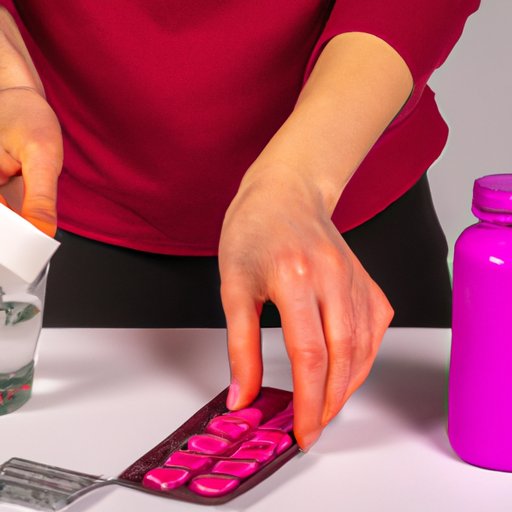Introduction
Dealing with a blood blister can be quite unpleasant, especially when located in areas where constant friction is experienced like the feet and hands. Hence, it is vital to know how to treat it properly to prevent further pain and discomfort.
Home Remedies
Home remedies could provide a quick and effective solution to healing a blood blister. Here are some common home remedies:
Aloe vera:
Aloe vera is packed with anti-inflammatory and antimicrobial properties, making it one of the best natural treatments for a blood blister. Simply apply pure aloe vera gel directly onto the blister several times a day until it disappears.
Tea tree oil:
Tea tree oil has excellent antiseptic and anti-inflammatory properties that can help treat a blood blister. Dilute tea tree oil with a carrier oil such as coconut oil or olive oil and apply a small amount on the blister using a cotton ball. Repeat this process every few hours for effective treatment.
Cold compresses:
Cold compresses help in reducing swelling and numbing the pain associated with a blood blister. Wrap some ice cubes in a towel and apply it to the area for 10-15 minutes at a time several times throughout the day. This will provide quick relief.
Over-the-counter treatments
If home remedies don’t work, there are some over-the-counter treatments you can get to help heal the blister. Some options include:
Hydrocortisone cream:
Hydrocortisone cream can help reduce itching and inflammation associated with a blood blister. Simply apply a thin layer of the cream on the blister and cover it with a bandage. Repeat this process 2-3 times a day until it disappears.
Antibiotic ointment:
Applying an antibiotic ointment on the blister can prevent infection and promote faster healing. To use, clean the area with mild soap and water, then apply a small amount of the ointment before covering it with a bandage. Repeat this process until the blister is healed.
Proper cleaning techniques
Proper cleaning and care are essential when trying to heal a blood blister. Here are some basic steps to follow:
Washing hands before touching blister:
Before treating the blister, it’s important to wash your hands with soap and water to prevent infection.
Cleaning blister with mild soap and water:
Cleaning the blister with mild soap and water can help prevent infection and reduce swelling. Pat the blister dry gently with a clean towel and apply an antibiotic ointment if necessary.
Avoiding harsh chemicals or rubbing:
Try to avoid using harsh chemicals or rubbing the blister as this can cause further damage and slow down the healing process.
Importance of proper footwear
Wearing well-fitting shoes is crucial in preventing blood blisters. Here are some ways to help protect your feet:
Wearing well-fitting shoes:
Ensure that shoes fit properly to avoid rubbing or friction that can contribute to the development of a blood blister.
Breaking in new shoes gradually:
New shoes need to be broken in gradually to get used to your feet. Wear them for short periods and gradually increase the time as your feet get used to them.
Using shoe inserts or padding:
Using shoe inserts or padding can also help to protect your feet from rubbing and friction that can cause blood blisters.
Covering the blister
Covering the blister can help protect it from further damage and promote healing. Here’s how:
Using blister bandages or moleskin tape:
Blister bandages or moleskin tape can provide extra cushioning and support to the blistered area, preventing further damage and promoting healing.
Protects blister from further damage:
Covering the blister will help keep it from being popped, further irritated, or infected.
Promotes healing:
By covering the blister, you’re creating a protective environment to encourage healing.
When to seek medical attention
It is essential to know when to seek medical attention when dealing with a blood blister. Here are some signs that indicate a need for medical attention:
Signs and symptoms indicating a need for medical attention:
- A blister that continues to worsen and does not heal
- Severe pain and discomfort
- Swelling and redness around the blister area
- Symptoms of infection such as oozing pus or fever
When to see a doctor or specialist:
If you’re experiencing any of these symptoms, seeking medical advice from a doctor or specialist is necessary.
Prevention tips
Preventing blood blisters in the future is essential to avoid further pain and discomfort. Here are some ways to prevent blood blisters:
Breaking in new shoes gradually:
Breaking in shoes gradually can help avoid any discomfort and rubbing that can cause blood blisters.
Using lotion to keep skin soft and supple:
Dry, rough skin is more prone to blisters. Applying lotion regularly will help keep the skin soft and supple.
Regularly inspecting feet:
Inspecting your feet before and after physical activity can help detect any areas susceptible to blood blisters.
Wearing socks and breathable shoes:
Wear breathable shoes and socks that are comfortable and fit properly. Additionally, moisture-absorbing or wicking socks can help prevent blister formation.
Conclusion
To wrap it up, treating and preventing blood blisters is vital for maintaining healthy skin. Proper cleaning techniques, proper footwear, using blister bandages, and seeking medical attention when needed are all necessary steps to treating a blood blister.
